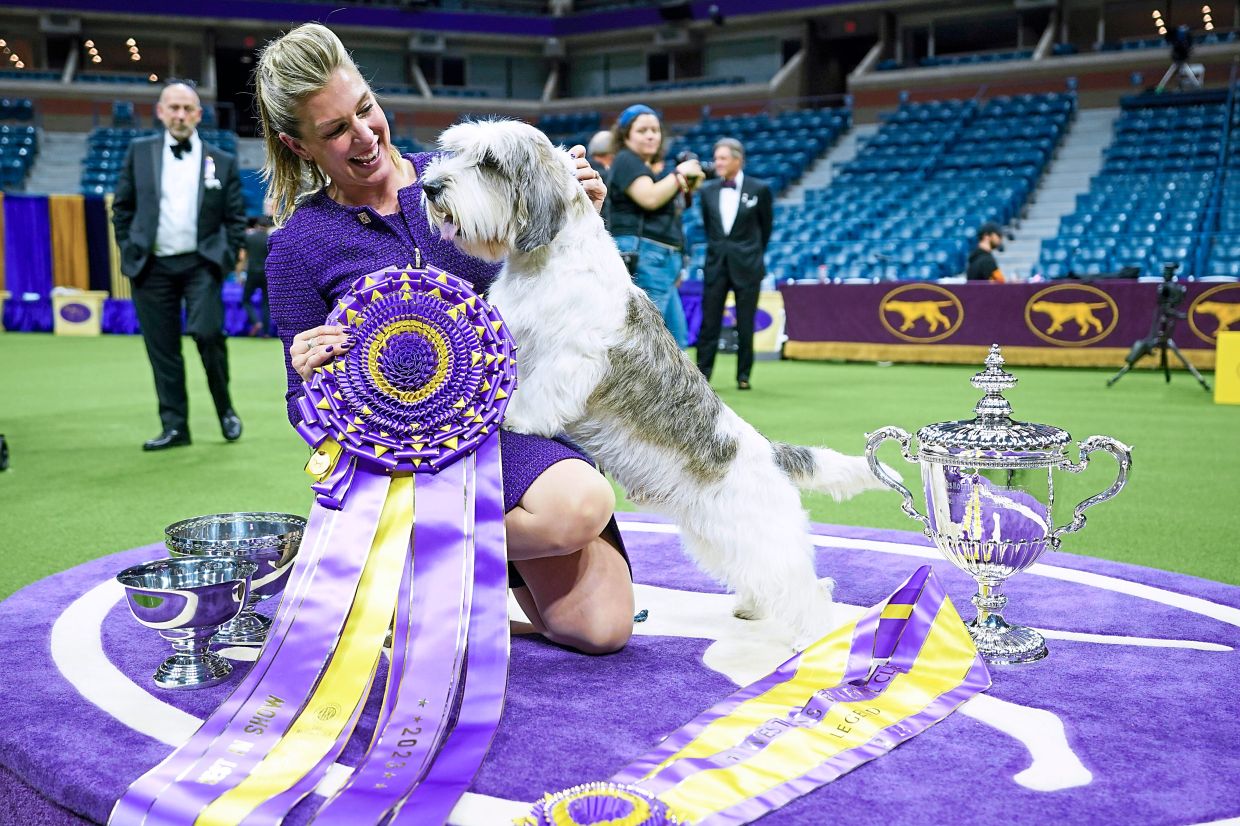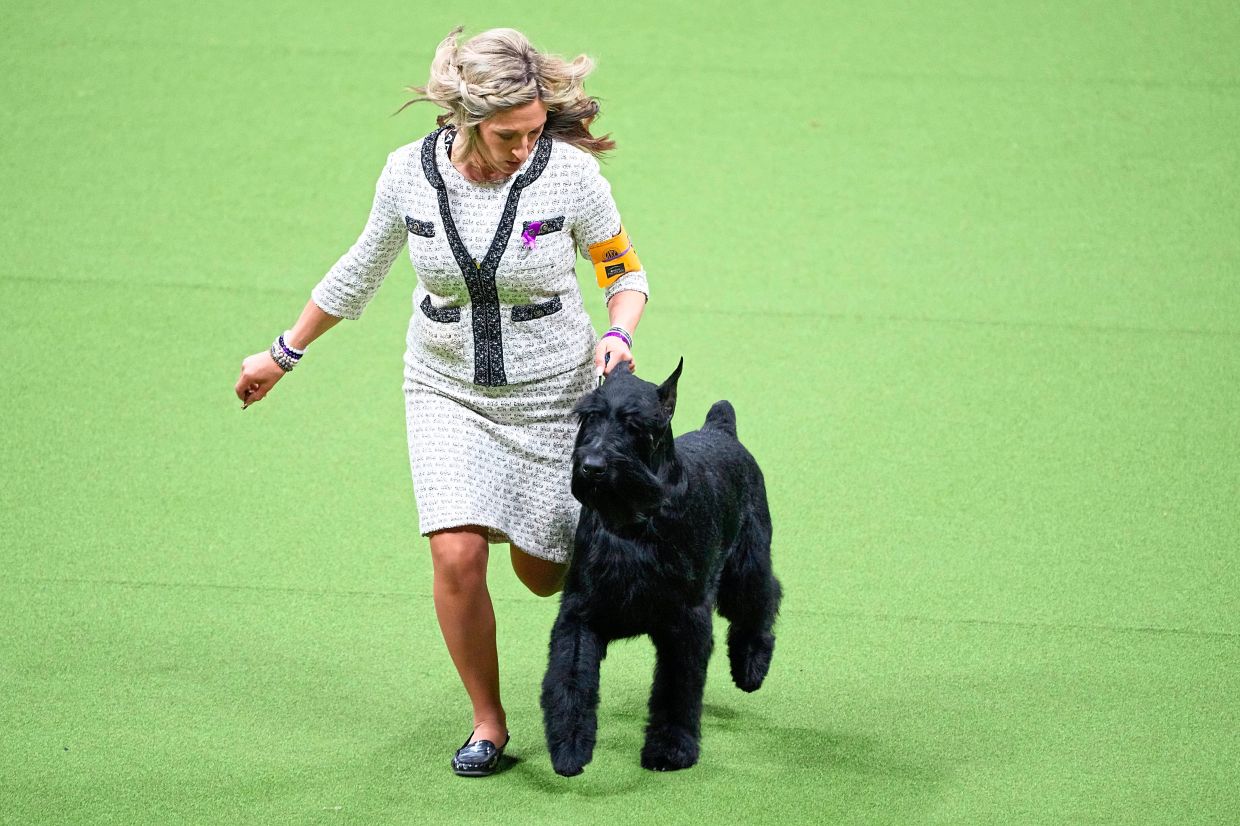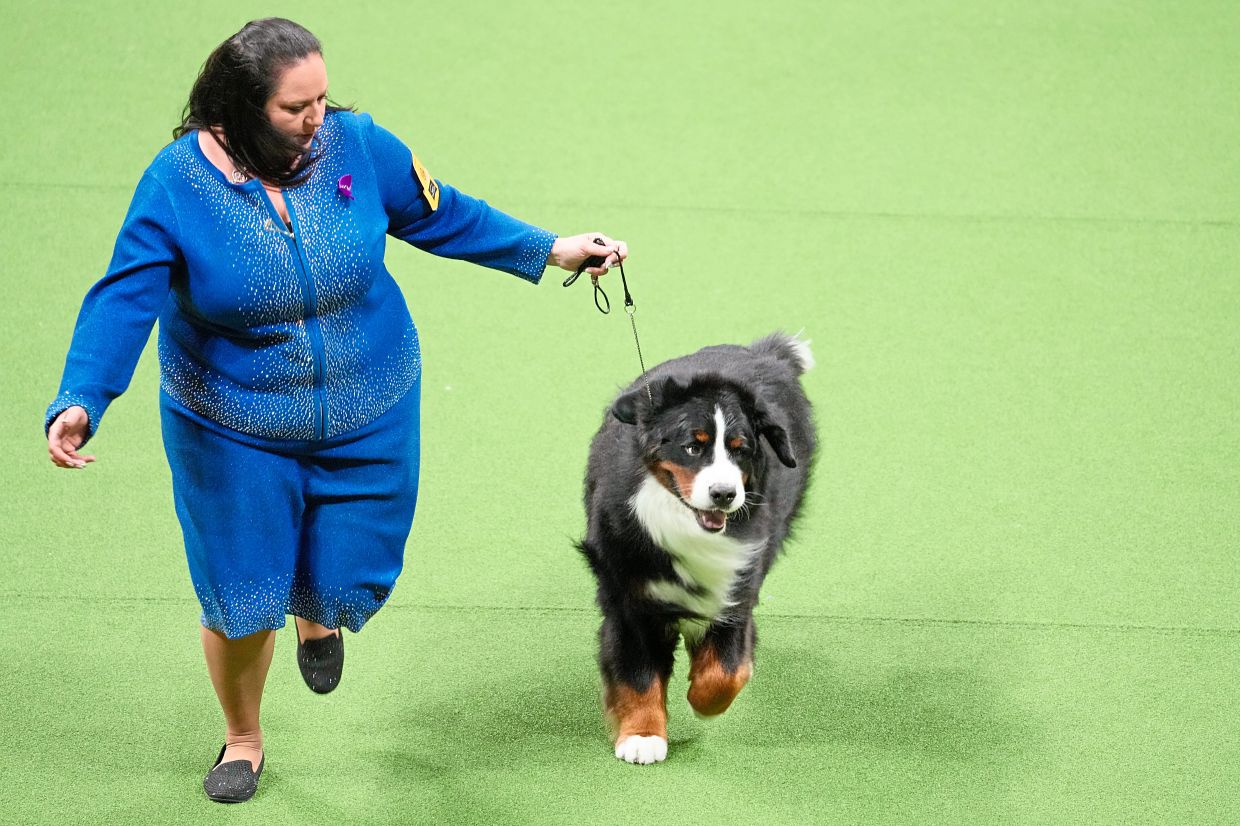Handler Janice Hays with her dog Buddy Holly, a Petit Basset Griffon Vendeen, after he won Best In Show during the 147th Westminster Kennel Club Dog show last week. Photos: AP
Doe-eyed Dachshunds, push-faced French Bulldogs and other non-sporting breeds circle the hallowed rings. A Bracco Italiano receives a jowl massage. Spaniels get blow-dried. Everyone is prepping – lovingly, meticulously – for a hoped-for big moment.
With more than 3,000 dogs competing last week at the annual Westminster Kennel Club dog show, one of the world's most prestigious, sometimes it’s a competitor’s confident gait or self-possessed gaze that sets it apart from the pack.
"Like all things, beauty is subjective,” said Ann Ingram, who travelled from Cork, Ireland, to New York City to judge several events. "A dog’s attitude in the ring can help. If the dog loves itself, you can tell. He kind of has that attitude of, you know, ‘I’m a winner’."
In short: There are the obvious characteristics – the quantifiable ones – and then there are the intangibles.
At the show this year on the 40-acre (16ha) grounds of the US Open tennis tournament, Ingram was had to choose the winning Schipperke, Bulldog, Frenchies and Miniature Poodle to go on to the semifinals.To hear Ingram and others tell it, the dog show is an arena where details matter deeply – details that the rest of the world may have no idea about. Though with the show’s increasing popularity as the years pass, that is changing.
"With breeds like Frenchies and Bulldogs, where there are health concerns with the breathing, you want to see them be able to move without any signs of distress,” Ingram said.
A spirited trot or swishy, excited wag of the tail may signify an excellent performance for one breed, but subpar training for another. For example, "any poodle that flies around the ring like a workhorse is not a poodle”, Ingram said.
Some dogs were bred to hunt lions (Rhodesian Ridgebacks), while others are bred to be affectionate puffballs (Pekingese).
Others are arrogant or aloof. Ingram says that when you approach an Afghan Hound, "They actually look through you, rather than at you" because they're bred to be far-seeing. "It’s like, ‘You’re disturbing my vision – could you move?’”
Atop gold-skirted, purple-velvet tables, handlers position their dogs in preparation for Ingram's scrutiny.
"When you go through the coat, maybe you find that there’s no body or the elbows are hanging out a bit,” she said.
When judging Poodles, her scrupulous attention to detail goes beyond the grooming. Some hairdressers, according to Ingram, pull poodles' fluffy fur taut in order to make round eyes appear almond-shaped, which is the breed's standard.
Some details may be common, but standards are not universal. In European competitions, for example, cream-coloured French Bulldogs and white-coloured Italian Greyhounds are not recognised. But in the United States, both dogs are competitive.
Before dogs enter the ring, groomers blow-dry the bellies of Tibetan Spaniels, unfurl curlers from the muzzles of snow-white Malteses and spritz the coiffed, cloudlike bobs of Bichon Frisés. Some curly and coarse-coated breeds are brushed with baby powders while fine, silky-haired dogs are spritzed with various aerosol sprays.
Behind the scenes on the morning of May 8, handlers tended to sleepy-faced Bracco Italianos, which are eligible for the first time to compete at Westminster this year.
Beth Sweigart of Bowmansville, Pennsylvania, holds the honour of judging Best in Show this year. So she’ll be holed up in her hotel room, staying clear of the rings until the premier competition. She's respecting a longstanding policy.
"Some breeds are more glamorous than others and catch the eye," Sweigart said. But others, like Labrador Retrievers, are what she called "a very utilitarian kind of dog. They're not fancy movers". They're bred to be duck-hunters. Though they were the most popular breed in the United States for nearly 30 years, Sweigart points out that at Westminster, they've never won.
Though she doesn't wear a uniform, experienced handlers and owners will likely recognise Sweigart from her more than 50 years in the dog world.
In previous years, she’s judged various terrier, toy and sporting groups.
At home, she has 12 dogs, including Labradors, Affenpinschers, and a pack of Norfolk Terriers that she said are "named after patriots” such as George Washington, Mamie Eisenhower, Sam Adams and Patrick Henry.
Dress style is typically conservative and sensible, since handlers and judges are bending over dogs in all manner.
Most female handlers and judges wear formal blouses and skirts cut below the knees. But "you don't want to be too precious about your outfit,” Ingram said, because "if you’re judging something like a Saint Bernard, you’re getting slobber on it".
Also sequestered in a hotel on May 8 was George Milutinovich of Fresno, California, who was judging 21 breeds and varieties in the nonsporting group that night.
At home, he has a Russell Terrier named Millie. Over the past couple decades, he has bred Pugs and Bichon Frisés. But in the ring, judges suspend their personal affinities and biases.
"What’s foremost in your mind," Milutinovich said, is this: "Can this dog before me do the job that it was originally bred to do?"
On May 8, the converging aromas of cologne and wet dog were in the air. Bon Bon, a short-haired Dachshund, scarfed down a fillet of chicken plucked from his handler's breast pocket before rounding the ring with a dignified strut that drew rapturous applause.
"There’s bigger shows numerically, but the fact that you’re actually getting the absolute cream of the cream... is quite exciting," Ingram said. "The whole razzmatazz of Westminster is very special." – AP














